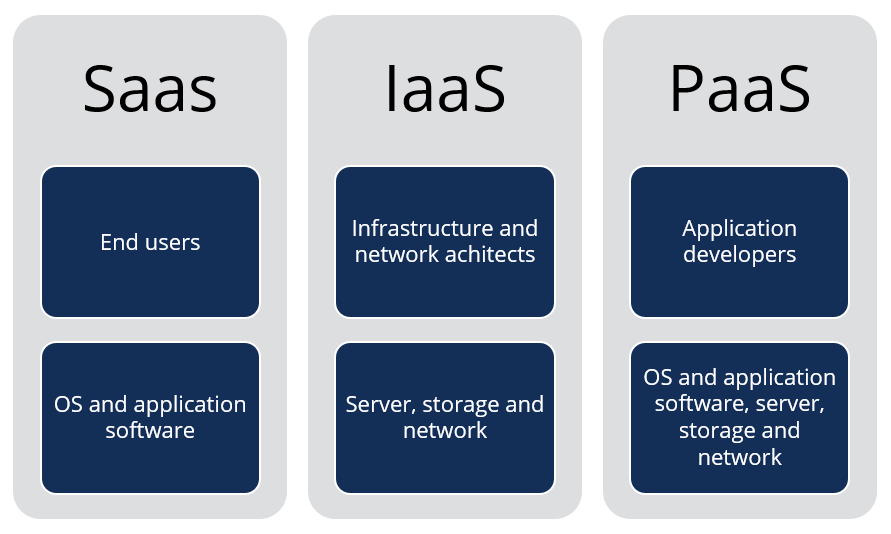Understanding LinkDaddy Cloud Services: The Ultimate Overview to Cloud Services Press Release Techniques
Wiki Article
Simplify Your Infrastructure With Cloud Provider
As organizations browse the ever-evolving landscape of technology and information monitoring, the duty of cloud solutions in streamlining facilities has ended up being progressively popular. The allure of structured procedures, boosted effectiveness, and improved source allotment through cloud options is undeniable. The journey towards a much more cost-efficient and agile IT infrastructure involves even more than simply migrating to the cloud. It requires a calculated strategy and a deep understanding of the nuances of cloud fostering. So, how can services efficiently browse this shift and really unlock the potential of cloud solutions for streamlining their facilities?Advantages of Cloud Services
Cloud services use a streamlined approach to managing IT framework, offering businesses with scalability, cost-efficiency, and flexibility. One of the crucial advantages of cloud solutions is the scalability they supply. Organizations can easily scale their resources up or down based upon demand, guaranteeing they just spend for what they make use of. This flexibility is particularly useful for services with fluctuating requirements or those experiencing development.Additionally, cloud services eliminate the requirement for organizations to buy expensive software and hardware. This cost-efficiency is a significant benefit, particularly for small to medium-sized enterprises looking to minimize ahead of time prices. By utilizing cloud services, services can access high-grade IT sources without the hefty cost related to traditional facilities arrangements.
In addition, cloud solutions offer services with the flexibility to access their information and applications from anywhere with a net link. This degree of access improves collaboration among groups, enables remote work, and enhances general performance. The versatility offered by cloud services equips organizations to adapt quickly to transforming market conditions and client needs.
Expense Cost Savings and Scalability
Along with the operational benefits highlighted previously, the assimilation of cloud services right into a firm's facilities brings forth considerable price savings and enhanced scalability. Cloud services use a pay-as-you-go design, allowing services to range sources up or down based on current needs, consequently staying clear of the expenses connected with maintaining excess capacity. This adaptability enables firms to adapt quickly to fluctuating needs without incurring unneeded costs.Furthermore, cloud services remove the need for upfront financial investments in equipment and software program, reducing resources expenses. General expenses are likewise lessened as business no more need to handle and preserve physical servers, bring about reduced energy usage and IT staffing costs. In addition, cloud solutions supply automated updates and maintenance, ensuring that the framework continues to be current and safe without needing hands-on interventions.
Enhanced Protection Procedures
Implementing strict security actions is extremely important when incorporating cloud solutions right into a business's facilities to protect delicate information and ensure conformity with market policies. Cloud service suppliers offer enhanced security functions such as information encryption, firewall defense, and multi-factor verification to mitigate cybersecurity risks.In addition, routine safety and security audits and compliance assessments aid guarantee and recognize susceptabilities adherence to industry criteria. Firms can likewise profit from functions like automated protection updates and real-time danger monitoring supplied by cloud company. By focusing on safety and security measures and staying proactive in addressing prospective risks, services can confidently leverage cloud services while securing their important information from unauthorized access or violations.
Transitioning to Cloud Framework
To effectively incorporate cloud services right into a company's facilities, an organized technique that addresses the shift towards cloud-based remedies is critical. Transitioning to cloud facilities entails cautious preparation and implementation to ensure a smooth movement process. The initial action is to assess the present infrastructure and figure out which systems and applications are appropriate for migration to the cloud. This analysis see this page must take into consideration elements such as data sensitivity, conformity needs, and efficiency demands.When the evaluation is total, a migration technique ought to be established. This technique needs to describe the timeline, sources, and responsibilities for moving each component to the cloud. It is vital to interact this strategy clearly to all stakeholders to guarantee alignment and lessen disruptions during the change.
Throughout the migration tracking, testing and process are critical to determine and deal with any kind of concerns immediately. Routine check out here checkpoints need to be developed to track progress and make needed adjustments. In addition, training for workers on using cloud solutions ought to be given to make sure an effective change and make the most of the advantages of the new facilities.
Finest Practices for Cloud Adoption
Successful fostering of cloud services hinges on the strategic positioning of business goals with technical abilities and business readiness. To make certain a smooth transition to the cloud, companies must start by carrying out a comprehensive assessment of their existing infrastructure and determining which work are best fit for cloud migration. It is crucial to include vital stakeholders from different departments in the decision-making procedure to acquire buy-in and address any issues early on.One more finest technique for cloud fostering is to prioritize security and compliance. Organizations needs to very carefully examine the protection measures provided by cloud provider and ensure that their data is secured according to market requirements and governing requirements. Executing robust information encryption, gain access to controls, and normal protection audits can assist minimize risks related to cloud adoption.

Final Thought

As companies browse the ever-evolving landscape of innovation and information monitoring, the function of cloud services in simplifying infrastructure has actually become progressively prominent - universal cloud go to this website Service. How can companies efficiently browse this change and truly unlock the capacity of cloud services for simplifying their facilities?
Cloud services use a structured method to handling IT framework, giving businesses with scalability, flexibility, and cost-efficiency. By utilizing cloud solutions, businesses can access premium IT resources without the significant rate tag associated with traditional infrastructure setups.
To ensure a smooth transition to the cloud, organizations ought to start by conducting a thorough assessment of their current infrastructure and recognizing which work are best fit for cloud movement.
Report this wiki page